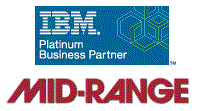Although the phrase “digital transformation” seems to be on everyone’s lips these days, it is no mere buzz-phrase or dry theory. In fact, many a C-suite exec and board member have digital transformation at the top of their to-do list.
Naturally, digital transformation gurus have sprung up here, there and everywhere. Digital change consultants are on the scene, eager to dispense wisdom and suggest courses of action, although ironically many of them are as in need of a good digital updating as their clients. Ask 100 of these gurus to define digital transformation and you could end up with 100 variations of the Wikipedia definition:
… change associated with the application of digital technology … the third stage of embracing digital technologies: digital competence, digital usage, digital transformation … may refer to the concept of ‘going paperless’ …
While Wikipedia is a great resource, a veritable online encyclopedia, if you were to go strictly by its definition of digital transformation, you would see it as merely one stage among many stages in a company’s development, or just a way of saving paper. These definitions do not suffice.
In trying to understand digital transformation, it is better to define it by what it is supposed to do in a company as opposed to what it is. Going this route, we can say digital transformation bridges the gap between the expectations of digital consumers or clients and what customer experience a company can offer. In more practical terms, digital transformation is about innovation on the business model and product level that leverages new digital and increasingly mobile capabilities to create experiences that delight customers and satisfy their ever-advancing expectations.
A company evolves its digital capabilities by running the right applications on the right infrastructure. A staged approach allows a company to get to today’s holy grail of cognitive analytics, high-performance data analytics, and advanced and predictive modeling for distinct competitive advantage.
The IBM white paper, “A New Breed of Servers for Digital Transformation”, describes these stages in detail, and discusses the digital transformation journey that most organizations are — willingly or unwillingly — on today, why a robust one- or two-socket server infrastructure is a critical component of that journey, and what some of the caveats are for one- or two-socket servers.
The white paper defines a roadmap on one- or two-socket servers for digital transformation in three stages, each with multiple steps — from running simple stateless web applications to adopting open source DBMSs to cloud to predictive modeling. It then talks about the various required parameters for an infrastructure of one- or two-socket servers, and goes into the current market landscape for such servers. Finally, the white paper also discusses IBM’s OpenPOWER LC servers, which run on POWER8, and some of the differentiators of this portfolio.

